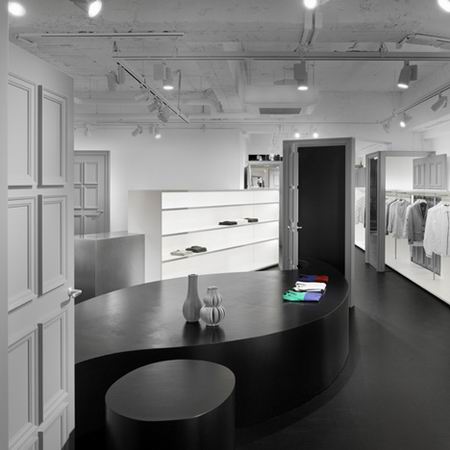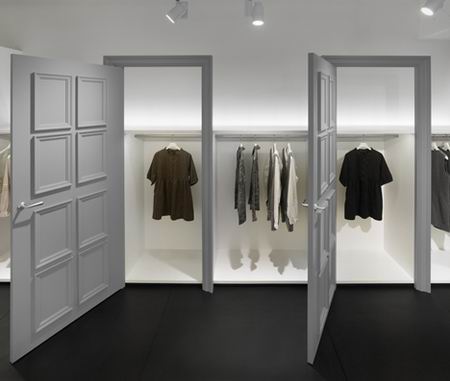|
|
Indulgi by Nendo








日本京都Indulgi服装店由Nendo设计,在店面内的空间中的门都是做为装饰搭配服装进行陈列的。如果你想看到Indulgi服装店内的所有产品,你就得去探索。
在Indulgi服装店空间中有着良好的视线,设计师将会创造一个永远无法看到整个空间的角度元素,因为他们增加了屏蔽元素--假门,正是这样不同的设计,改变了客户传统的购物环境,让一家品牌店变成了体验店。
体验店的性质在于,它的每一个部分都会为你带来惊喜,因此当你每打开一扇门时,不仅是打开了一种渴望,还为其带来了惊喜,第一个空间都为其顾客带来了十足的好奇心。
This boutique by Japanese designers Nendo is full of fake doors.
The extra doors break up sight lines in the long narrow Indulgi clothes store in Kyoto, meaning customers must explore the interior if they want to see all the merchandise.
Each door forms part of the shop’s display system, sporting rails, hooks, shelving and mirrors.
Back in 2009, architects Ninkipen! created a similarly surreal but more sinister shop lined with eleven fake doors and only one real exit, while Nendo themselves caused controversy among our readers last year with their mental health clinic where none of the doors open so patients and staff must open sections of the walls to move around – see what all the fuss is about in our earlier story or read more about it in the Dezeen Book of Ideas.
You can also watch Oki Sato of Nendo talking about his work in our interview on Dezeen Screen and see all our stories about Nendo here.
Photographs are by Daici Ano.
Here are some more details from Nendo:
Indulgi
A new shop “INDULGI” designed by nendo opened in Kyoto, Japan. A small clothing shop in Kyoto’s Nakakyo district.
The deep, narrow space has good sightlines, but this can be dangerous, too: a shop can look messy and the interior space simply uninteresting if visitors can see all its products in one glance.
We decided to add shielding elements to create a space that could never be seen in its entirety, one in which different elements appear and disappear from view, changing customers’ experience of the shop as they move about it.
Walls create an over-strong sense of pressure, and the space already contained a number of doors, so we added even more doors to it. We set the doors open and closed at different angles to control the degree of visibility, and the mix of ‘real’ and ‘fake’ doors gives the space a slight sense of surreality.
We added functionality to the ‘fake’ doors, using them for hangers, shelving and mirrors, and furnished them with fixtures that spill out from inside in different colours and textures to create even more variation in the space.
Opening one door brings not only surprise but the desire to open the next, creating a space that evokes curiosity in all its visitors.
53-1 Takakura Higashi-hairu,
Nakagyo-ku Sanjo-Street,
Kyoto 604-8111 |
|
 |手机版|Archiver|室内人
( 辽ICP备05022379号 )
|手机版|Archiver|室内人
( 辽ICP备05022379号 )


 关于室内人 | QQ:3459039404(客服) | Email:snren_com@163.com
关于室内人 | QQ:3459039404(客服) | Email:snren_com@163.com